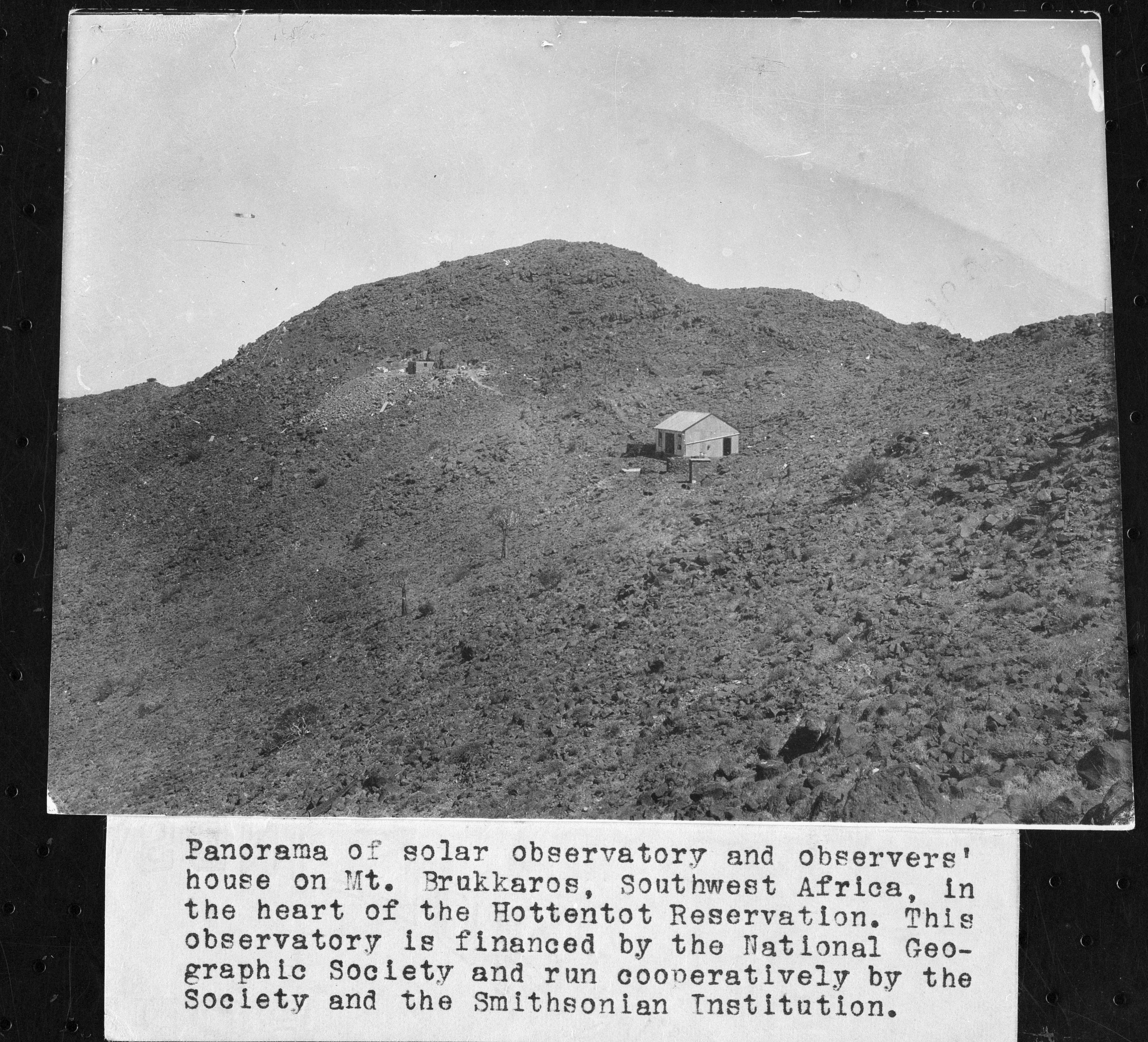Previously I have written about early 20th-Century women computers at the Smithsonian Astrophysical Observatory’s (SAO) headquarters. Since then, I have discovered that there were also various women at SAO field stations around the world who contributed to Smithsonian research.

According to the Annals of the Astrophysical Observatory of the Smithsonian Institution, most of these women were married to SAO field directors. In the annals, some women were only mentioned as living at the observatories with their husbands. Others were credited with making solar observations, scouting for new locations for observatories, and more. Despite their contributions, these women were not noted in staff lists. This is one reason why their work went unacknowledged for so long.
One woman whose contributions to Smithsonian research were mentioned in annals, but not in staff lists, was Margaret Sordahl (1906-1995). From 1929 to 1932, Sordahl was at the Mount Brukkaros station in Southwest Africa with her husband Louis Oscar Sordahl, who was serving as field director at the time. Unlike the other women at SAO stations who contributed to solar research, Sordahl collected flora and fauna specimens for the United States National Museum, later known as the Smithsonian National Museum of Natural History. She sent back collections of birds, mammals, reptiles, insects, and plants. According to this 1932 Board of Regent Report, many of her collections were of great interest to the museum due to the lack of previous research by naturalists in that area.
Though the range of her collections was varied, Sordahl seemed especially interested in the birds of Southwest Africa. One of her field notebooks includes entries that detail her observing, hunting, and collecting the birds. According to several sources, including Herbert Friedmann’s “Two Birds New to Science From Great Namaqualand,”, Sordahl collected two birds that were previously unknown to science. One of the animals was named Erythropygia coryphaeus abboti in honor of astrophysicist Charles G. Abbot, fifth Smithsonian Secretary and director of SAO.

Beyond collecting fauna and flora, life at the Mount Brukkanos station was both isolating and exciting. The station sat on top of a dead volcano and SAO staff, including Sordahl, lived in a house made from a natural cave. In a 1930 The Hartford Courant article, previous SAO staff described what life was like. The group detailed traveling 61 miles to the grocery store, encounters with a leopard and multiple cobras, and how a local tribal official allowed them to hunt Springbok in the area. This group consisted of Frederick Greeley, William H. Hoover, Pauline Hoover, and their infant baby, Betty. A 1929 Los Angeles Times article quips that “a flock of chickens and a cow were Betty’s only playmates for three years.”
The public was obviously fascinated with life at this station. Various articles were published about the Hoovers’ and the Sordahls’ experiences at the station like the ones below:
- 1929 Los Angeles Times - “DREARY ISOLATION ENDS: Scientific Party Back From Three-Year Stay on Solitary Mountainside in Africa”
- 1929 Los Angeles Times - “LONELIEST SPOT GOAL OF THREE: Scientists Leave on Trip of 12,000 Miles for Long Stay in Desolate Region”
- 1929 Los Angeles Times - “SHE'LL HELP TAKE SUN'S TEMPERATURE”
- 1929 Chicago Daily Tribune - “Science to Take Youthful Couple to African Wild: Husband Will Study Sun Among the Hottentots”
- 1930 Hartford Courant - “Scientists Return From South Africa: Exciting Stories Told By Four Back From Observatory in Hottentot Reservation”
- 1933 Washington Post article - “Washingtonian Finds Bird That Whistles Like Boys: Is Among Rare Zoological Specimens Received by Smithsonian From Africa; Breed Frequents Temperate Climate of Mountain Sections.”
- 1930 Hartford Courant, “Scientists Return From South Africa: Exciting Stories Told By Four Back From Observatory in Hottentot Reservation”
Despite the historic fascination with the people who traveled globally to study the sun, little is still known about the women at these SAO stations. Hopefully, archival research will reveal more about their contributions to science.
Related Resources
- "Early 20th-Century Women Computers at the Smithsonian" by Nell MacCarty, The Bigger Picture, Smithsonian Institution Archives
- "What's in a Name? Uncovering Early Women Computers" by Mamie Slevin, The Bigger Picture, Smithsonian Institution Archives
Produced by the Smithsonian Institution Archives. For copyright questions, please see the Terms of Use.




Leave a Comment